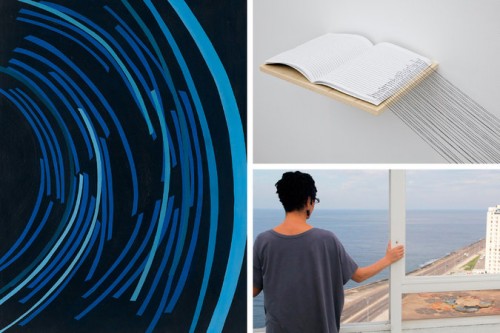In Chelsea, a Trio of Galleries Bring Cuba Stateside

Click here to view original web page at www.nytimes.com

When the U.S. loosened travel restrictions to Cuba in 2014, Havana jumped to the top of everyone’s cultural bucket list. And the New York art scene has caught the fever: A rash of exhibitions this winter are devoted to the island’s art community. A timely follow-up to last spring’s contemporary-focused “Cuba Libre!” exhibition at the Bronx Museum of the Arts, David Zwirner’s “Concrete Cuba” offers one of the first looks at the island’s pre-revolutionary art, with a comprehensive show of the sculptures and paintings of Los Diez Pintores Concretos (the Ten Concrete Painters), a group of geometrically inclined artists that operated under that collective moniker for a brief moment between 1959 to 1961. Taking up the second story of the gallery’s 20th Street tower, the historical work has a pleasingly human scale. A celebration of medium and color rather than content, the concretist compositions share more conceptual similarities with the process-based artists of today than with the abstract expressionists who were working in Europe and the U.S. at that time.
A more contemporary point of view can be found a few blocks up at Alexander Gray Associates, where the Cuban artist Coco Fusco’s solo presentation fills the white cube. The show includes Fusco’s most recent film, “La Confesión,” which debuted at the 56th Venice Biennale last year and examines political oppression through the case of the Cuban poet Heberto Padilla. Fusco’s exploration of Padilla’s plight continues with “Confidencial, Autores Firmantes,” a collection of facsimiles that Fusco made from official documents found in the archive of the Cuban Ministry of Culture.
Farther uptown, Sean Kelly Gallery presents the first international solo show of the equally outspoken Diana Fonseca Quiñones, who looks at Cuban culture through the symbology of everyday objects. Her methods vary: Sculptures, videos and paintings fill the gallery. Patchy canvases collaged from paint fragments stripped from the facades of Old Havana hang in the same space as sculptures made from books and thread — everyday objects that help Quinoñes reframe larger social issues through metaphor. And in her videos, an act as simple as striking a match can take on new symbolic resonance. Proof that the trend shows no signs of abating: After Quiñones’s exhibition, another Cuban artist, Alejandro Campins, will move into Sean Kelly’s space.
Click here to view original web page at www.nytimes.com
January 21, 2016
